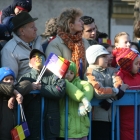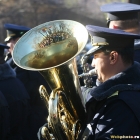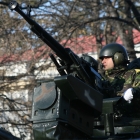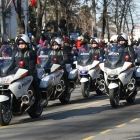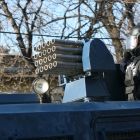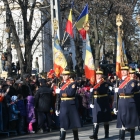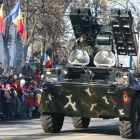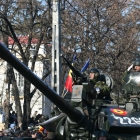Military parade at Romania’s first national day as EU member
Military parades used to be an impressive event during communism, when not just soldiers were summoned but also large numbers of workers from the big factories that used to exist in the capital. To have an idea, you could have a look at those still taking place in North Korea, or even in Russia to some extent. Back than, communist propaganda used that to display military prowess, strength, but also to show the support of the proletariat to the ruling party. And it morphed into a personality cult for the leader.
Fast forward 17 years and in the capital Bucharest there is a slightly different parade taking place. The first difference is that of weather. The national day during communism used to be in August, in summer heat. The current national day of Romania is December 1st, which means the winter can come with moderate cold and some sunshine, or with biting frost, snow or cold rain. This alone means attending an outside event for some hours can be a display of stoicism. So there is no picnic to enjoy the state holyday, which makes the event lack popular enjoyment.
Another important difference is that the workers are no longer called to attend the rally with portraits of the president or communist slogans. Only the soldiers are marching and all civilians present are there because they want to, not because they have to. What brings them out can be curiosity or genuine patriotism in respect for the historic event.
The national day was voted by Parliament right after the Revolution of December 1989, to celebrate the National Unity Day of December 1st 1918. In the aftermath of the first world war, Romanian historic provinces were free to declare unification with the mainland, as the neighbouring empires, who dominated some of those regions collapsed – The Russian Empire of the Tsar fell under the Bolshevik Revolution of 1917, the Austrian and Hungarian Empire disintegrated, and the same happened to the Ottoman Empire, that eventually was reduced to modern Turkey in 1923. All these external events were accompanied (and to some extent accelerated) by the heroic battles of Romanian army. Without the pressure from surrounding empires, Romania first achieved independence from the Ottoman Empire in 1877. Than the provinces where Romanians were majority one by one voted to reunite with the country. After Bessarabia and Bukovina, Transylvania was the last to vote the unification in December 1918 at Alba Iulia. Thus, the crowning hour of a centuries old national dream.
Since we started with a comparison with the parades during communism, we have to state another difference. The army back than was a popular army based on draft. It used to be ten times larger, making it at least on paper one of the largest fighting forces in Europe. The draft, which was dreaded by young boys, was abandoned sometime around the year 2.000. Some say it helped turn young boys into men, building character. Others, that it was a waste of time and a humiliating ordeal sometimes. The army is now entirely of paid professionals but reduced to a small fraction of what it used to.
As for the fighting technique, there’s another dispute between nostalgics and optimists. The first point out that Romania used to have a complete military industry, capable of producing all things from bullets to tanks, fighter jets, helicopters, automatic rifles and anti-tank rockets. In some categories, the country was even in top 5 exporters of weaponry in the world sometimes in the 80s.
On the other hand, it was outdated technique, based on Soviet patents, say the others. And that industry was immensely costly for our budget. Now an even greater budget goes into imported armament from United States, Israel and some European countries.
The most popular moment of the parade is when the aviation is cruising over the public. Also spectacular are the historic costumes of regiments used for protocol and the infantry rolling in tanks and armoured vehicles. Piranha III and Humvee M114 are just some of the latest foreign acquisition on display. Along with the Defence Minister, are taking part police and riot police from the Interior Minister, anti-terrorism units for Romanian Intelligence Service, medical units of the Health Minister and marines. Also present were some officers who took part in missions in Kosovo, Afghanistan, Iraq and Angola.
The fanfare ended the march with its jolly music.
Mai multe despre: Events • army • fanfare • military • parade • Romania • sailors • soldirs- Home Page
start page - Architecture
landmark buildings - Sacred architecture
places of worship - Nature
landscape photography - Concert
performing artists - Christmas
Santa Claus pictures
- Jooble
jobs for photographers - Escape
an out of control blog - Merry Christmas
The best organizer of Christmas parties - Astro photo
Eclipse hunting and astrological photography


